In this post, I’ll explain in detail how the car rental process works in Europe, based on our past experiences. We’ll try to cover as many details as possible. If you still have questions, feel free to leave a comment!
Contents
- What are the benefits of renting a car in Europe?
- How to rent a car in Europe?
- What you need before renting a car in Europe
- How much is the security deposit for a car rental in Europe?
- Is it mandatory to get special insurance for the vehicle?
- How old do you need to be to rent a car in Europe?
- Which sites should you check before renting a car in Europe?
- What is the car pickup process like?
- Are there tolls on European roads?
- Can the weather be an issue?
- What is the return process like?
- 5 golden tips
What are the benefits of renting a car in Europe?
Renting a car during your vacation in Europe can offer huge advantages. Among the main ones:
Unique routes
You don’t have to adjust your trip based on flights, trains, or buses. Make your own route, visiting the cities you’ve always dreamed of and the places that most interest you.
Managing your time
Leave whenever you want and travel as long as you need. You’re in control.
Saving money
Renting a car in Europe can be much cheaper than you might think. The rental itself isn’t expensive, and if you’re traveling with a group, the cost per person drops significantly.
Fun
If you’re like me and love to drive, get ready to enjoy some of the best roads in the world—alongside some breathtaking scenery.

How to rent a car in Europe?
First, some good news: if you’re used to renting cars in Brazil, the process in Europe is very similar.
But there are some small differences—and that’s why I’m writing this post. After all, knowledge should be shared!
What you need before renting a car in Europe
First things first: you need a valid driver’s license from your home country. In addition, I recommend getting an International Driving Permit (IDP).
According to Detran-SC, the IDP doesn’t replace your national license in Brazil, but it’s accepted in over 100 countries. The IDP is valid for three years, unless your driver’s license has a shorter expiration date.
You’ll see a lot of blogs or sites saying you might not need an IDP—and maybe you won’t. But if you get pulled over or have an accident, the IDP is what proves to the authorities that you’re licensed in your home country.
(And if you don’t have the IDP, you could run into problems.)
Here in Santa Catarina, the process was quick and easy: I just went to the Detran-SC website, submitted the request, paid the fee, and waited for the email saying the document was ready for pickup.
Along with your license and IDP, you’ll also need an international credit card for the security deposit—just like in Brazil.
Read also:
– Road trip to the most famous church in the Dolomites
– Molveno, one of the most beautiful places we’ve visited
How much is the security deposit for a car rental in Europe?
For those unfamiliar, the security deposit is the amount the rental company holds as a guarantee in case of damage to the vehicle. After the rental, this is refunded to your credit card if it wasn’t used. From my experience, the deposit has ranged from €300 to €500. However, I don’t know how this amount is calculated, and it could be higher or lower in your case.
Is it mandatory to get special insurance for the vehicle?
Now, let’s talk about insurance—a delicate topic that depends a lot on how you handle life’s uncertainties, haha!
There are two ways to insure a rental car: - Rent with full coverage from the rental company’s insurer, or - Use the insurance provided by your credit card to cover any damage. The latter is often pitched by your bank manager as a “perk” of having their card—but don’t be fooled; there’s no such thing as a free lunch.
If you choose to use your credit card’s insurance, remember: if there’s an accident, you’ll have to cover all the costs upfront and then request reimbursement from the card issuer.
So, be cautious—your dream trip could quickly turn into a nightmare.
In case you’re wondering: yes, I’ve used my credit card’s insurance before—before I fully understood the bureaucratic headaches involved.
Nowadays, I weigh the risks carefully, especially in places where accidents (like a cracked windshield, broken mirror, or total loss of the vehicle) are more likely. In those situations, I prefer paying the rental company’s insurance so I don’t get stuck in bureaucratic hassles in a foreign country and language.
How old do you need to be to rent a car in Europe?
By law, the minimum age is 21, though some companies charge extra fees if the renter is under 25.
Another important point: the credit card used for the rental must be in the name of the main driver.
If you’re cost-conscious (and with the euro above 5 reais, who isn’t?), consider picking up and dropping off the car at the same location. Rental companies charge hefty fees for returning the car to a different branch.
But if cost isn’t a concern, go ahead and plan a route that covers as many places as you can. Book your ticket into one city and your return flight from another—drive between the two!
One more tip: if you’re traveling between countries, always inform the rental company. Some will ask during the booking process; others at pickup. There may be extra fees or insurance complications in case of an accident.
Which sites should you check before renting a car in Europe?
There are tons of search sites and online booking platforms to choose from. I suggest RentCars.com.Shop around, do multiple simulations, and decide whether unlimited mileage or a fixed rate is better for you. Visit these sites during the week and use an incognito browser.
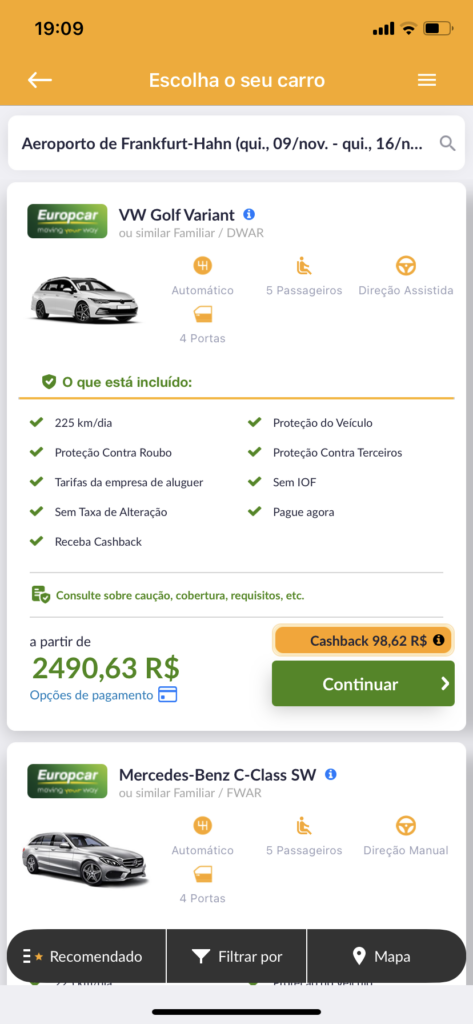
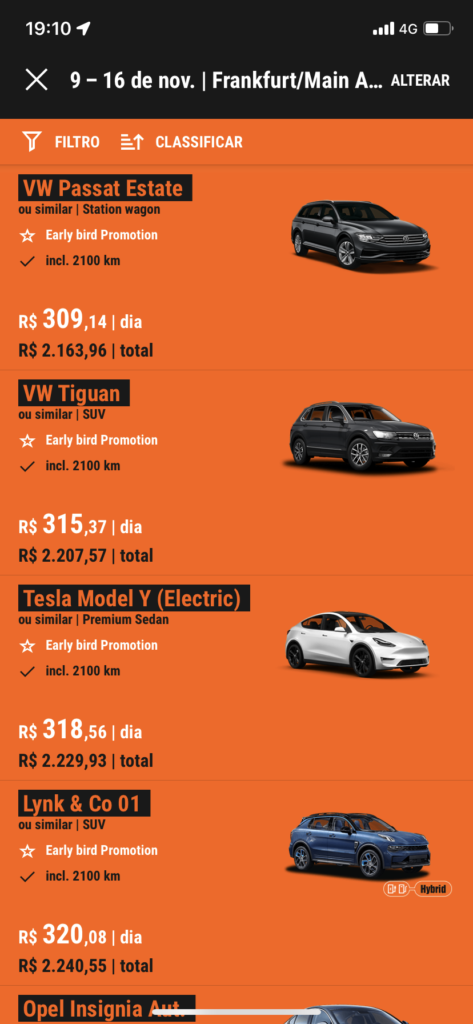
Use technology to your advantage—prices are usually lower when you book early. Closer to your trip, there might be good last-minute deals, though they’re less likely. Stick to well-known companies—don’t cut corners when it comes to such an important part of your trip!

What is the car pickup process like?
When you pick up the car, don’t just hop in and drive off—inspect it carefully first. Take pictures from multiple angles and of any potential trouble spots for the return. A picture’s worth a thousand words!
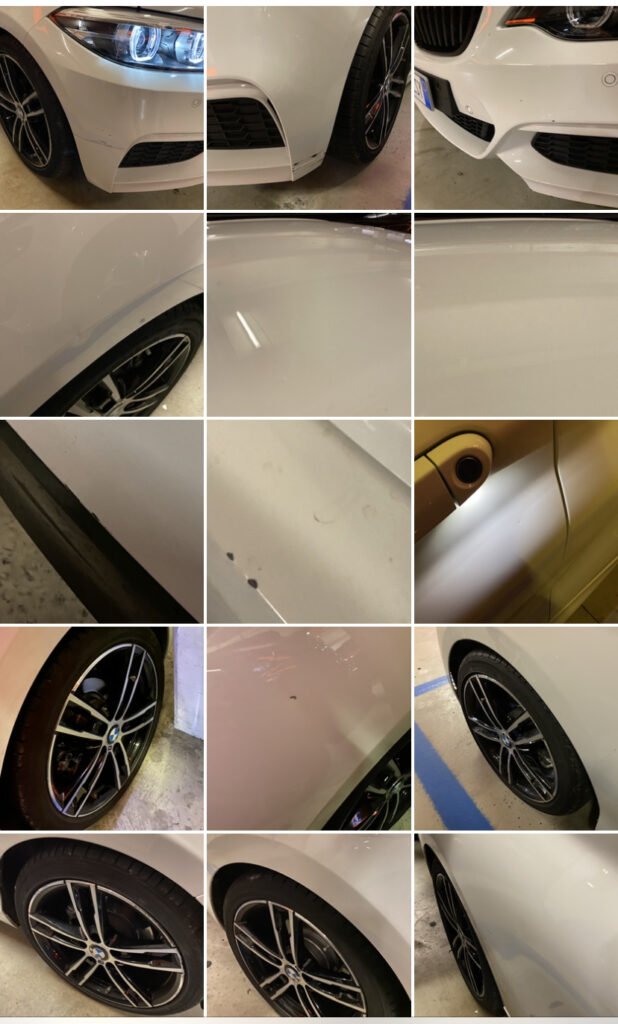
Are there tolls on European roads?

Remember that the main highways in Europe have tolls. So it’s a good idea to have a traffic app and some euros in cash. Also, have a phone with an international data SIM. Toll roads are common, but there are usually longer (free) routes available too.
If you can, venture off the main routes to discover small towns and villages. But don’t skip the toll roads altogether—they’re usually excellent. If you’re in Germany, you might even get to experience the famous Autobahns!
Can the weather be an issue?
Unlike Brazil, Europe has well-defined seasons. So it’s crucial to know the rules in countries that require winter or all-season tires between late autumn and the end of winter.
Driving in snow requires extra care. If you’re heading somewhere with snowstorms in the forecast, accessories like tire chains and windshield scrapers are essential.
And always follow the traffic laws! Unexpectedly, you might find fines on your credit card statement months after you’ve returned home—it happened to me!
What is the return process like?
Finally, the return process is very similar to Brazil. Bring the car back with a full tank (even if it’s an electric car—more on that in another post) and in clean condition. Wait a few business days for the security deposit to be refunded. If it’s not, don’t hesitate to contact the rental company. That’s why it’s best to use reputable companies—ideally ones that operate in Brazil and have staff who speak Portuguese.

5 golden tips
Golden tip 01
If you decide to use your credit card’s insurance to save money, read the policy carefully. Understand exactly what is and isn’t covered when you book the car.
Golden tip 02
Plan ahead and avoid renting a car at the airport counter. Booking in advance can get you better cars and better prices.
Golden tip 03
Avoid small rental companies and research each company’s reputation. Problems happen, and you’ll want staff who can handle them professionally.
Golden tip 04
Some countries charge different rates for the same car and rental period. Sometimes, it’s worth crossing the border to rent the car in a neighboring country.
Golden tip 05
Some companies offer perks to certain credit card holders or loyalty program members—known as “status match.” For example, Mastercard Black holders get some nice perks at Sixt, like a car category upgrade.


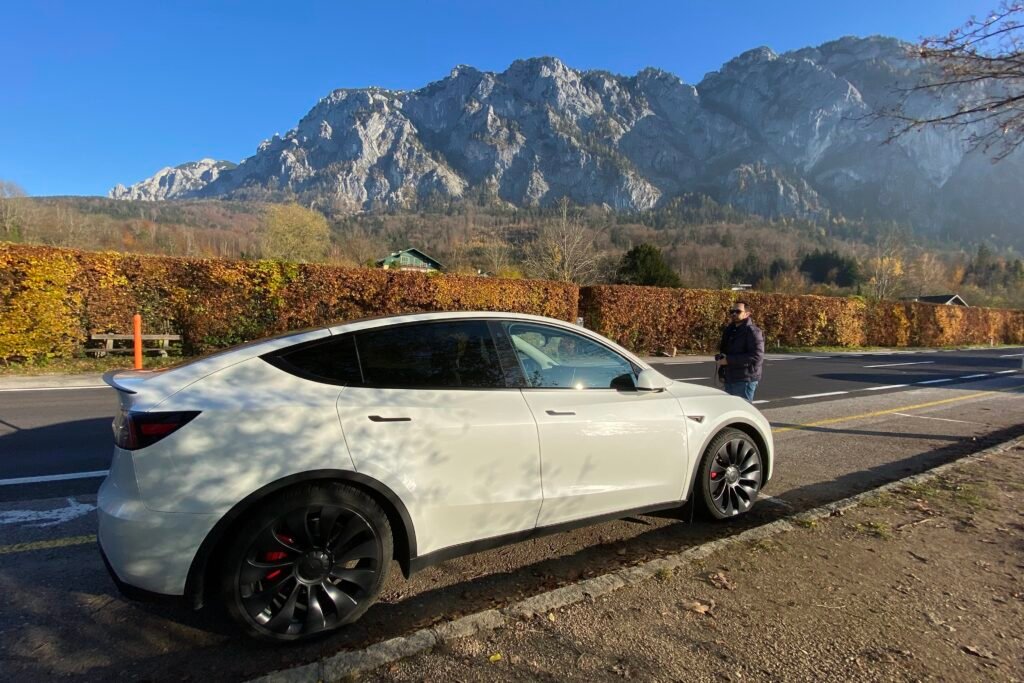
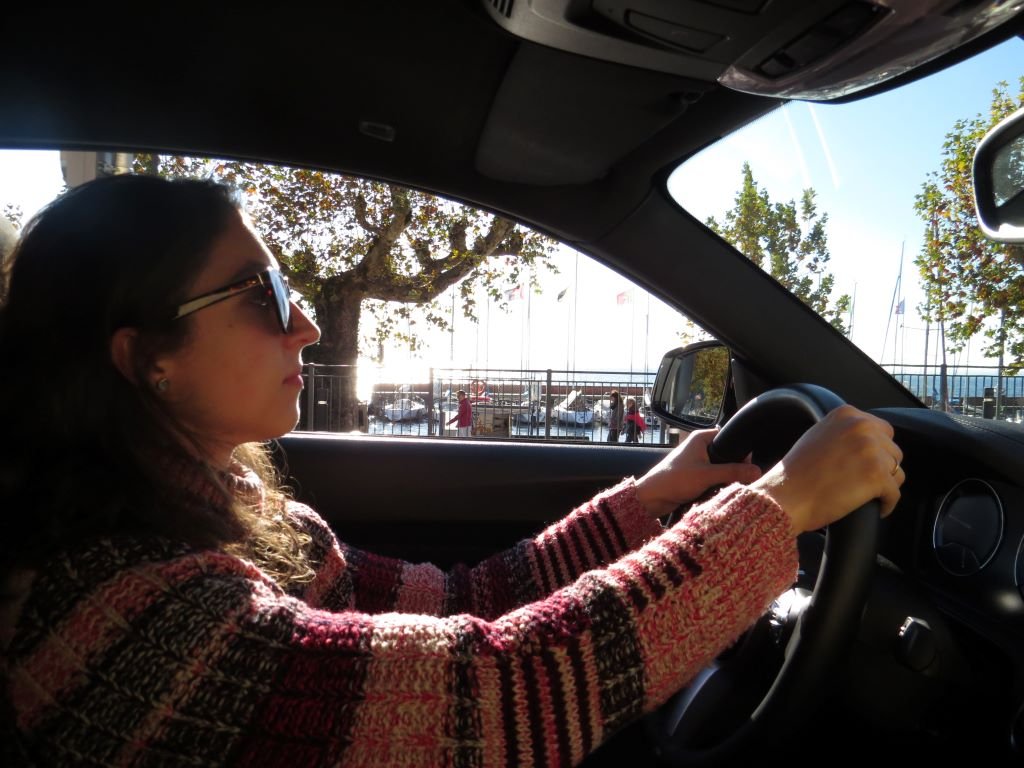


Excelente conteúdo!!
Que demaisssss! Dicas excelentes já salvas para a viagem. ♥️
Pingback: Intercâmbio de espanhol - Fundación Lengua - Valladolid, Espanha
Pingback: Um dia em Salamanca Espanha - Top 10 lugares para conhecer
Pingback: Molveno - Trentino - Itália | Guia completo | Férias na montanha
Pingback: Um dia em Hallstatt nos Alpes da Áustria - O que saber antes de ir
Ótimas dicas! Parabéns!!
Você teria alguma dica dos pedagios na Alemanha? Por exemplo: como pagar, ou se tem alguma forma eletrônica de passar sem parar. Tenho uma viagem para Alemanha na metade do ano. Tenha essa preocupação com relação aos pedagios.
Bom dia Dionei, como vai?
Nós passamos pela Alemanha de carro e não vimos nenhum pedágio.
Neste país em específico, o pedágio só é cobrado para veículos com mais de 7,5 toneladas, ou seja, veículos de carga. Acredito que não seja o seu caso. Caso seja, me avise que podemos tentar ajudar com essa demanda sua.
Todavia, para toda regra existem algumas excessões. Alguns túneis no norte do país cobram pedágios para veículos leves sim. Pelo que sei são pouquíssimos os casos.
Sobre pagamento, costumeiramente, os pedágios aceitam várias formas de pagamento. Ainda, vale salientar que a Europa de forma geral vem mudando a forma de lidar com dinheiro, e é cada vez mais comum a utilização de cartões. Sugiro que leve algum você, seja Wise, Nomad, Avenue ou C6, escolha o que melhor lhe atende.
Espero ter ajudado.
Boa viagem.
Pingback: 3 museus de carros na Alemanha para amantes do automobilismo
Isso vai salvar minha viagem
Pingback: Alugamos um Tesla Model Y na Europa
Pingback: Rapperswil - Como Aproveitar ao máximo um dia de passeio
Pingback: Stein am Rhein: um bate e volta perfeito partindo de Zurique
Pingback: Exchange in Ireland: 10 Years of Transformative Memories
Pingback: Rhine Falls (Rheinfall), Switzerland
Pingback: Lago di Braies - Dolomitas - Itália - Guia completo